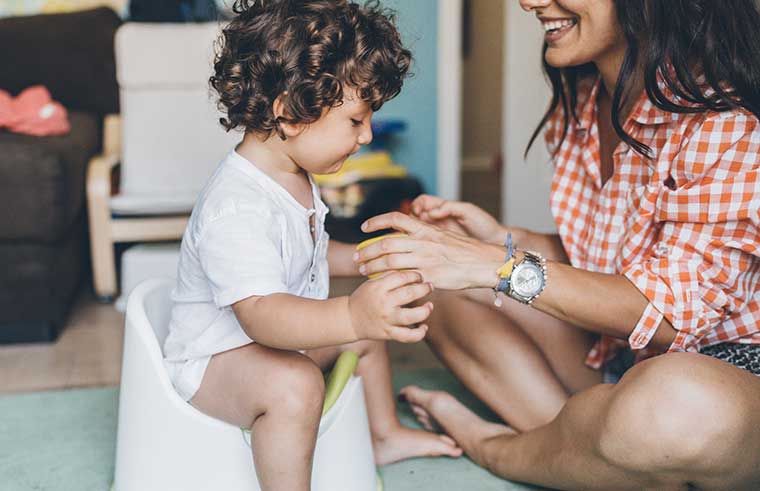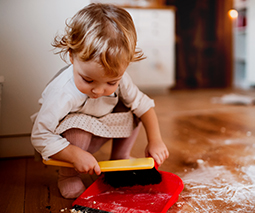Toilet training a boy: When to stand and when to sit?

Toilet training: two words that have the power to strike fear into the heart of any parent.
When the time comes to toilet train your child, all the questions can really start to pile up. When do you do it? Can they be too young? Can you leave it too late? Is toilet training different for boys and girls?
Karen Willcocks is from Karitane. She says parents face many challenges when it comes to toilet training, but a common question she gets asked is about teaching boys.
Listen to Karen Willcocks on Feed Play Love:
Stand or sit?
“Sometimes parents of boys wonder about when to make them stand and pass urine,” she says.
And while your toddler might want to be like his dad, Karen says parents should hold off on teaching boys to stand and wee until they are confidently sitting and going to the toilet.
This is because bowel movements and passing urine generally happen at the same time, making it easier to learn both while sitting down. Not having to aim in the toilet bowl is also less of a distraction.
“Get them successfully toilet trained sitting down on the toilet or potty until you can help them learn to stand up,” says Karen.
“There’s also a risk that if you go straight to the big, adult toilet with no seat and no little steps and no support, they’ll develop a fear of the toilet.”
Imitation is a big part of learning
When it’s time to graduate from sitting to standing, imitation plays a big part in learning. So if you’re a household with a closed-door bathroom policy, this is all about to change, especially for dad.
“Seeing Dad and what he does, including washing his hands and things like that, are really important,” explains Karen.
But remember: if there’s any resistance from your little man, don’t force the issue.
When will my boy be fully toilet trained?
There’s no hard and fast rule for how long toilet training will take.
“Around 95 percent of children are toilet trained by four years,” says Karen. “But there’s still a percentage that might take them up to six years.”
That said, lots of factors can make this milestone difficult for some children to reach.
“If you’re seeing your doctor or a child health nurse, they would be kind of going, ‘Tell me what else is happening in the family, are there reasons why this is difficult for your child?’” says Karen.
“For instance, if there was bullying at preschool, or you’re changing schools, or someone close to you died in the family, or a baby arrived in the family then there’s a lot emotionally going on for that child.
“And physical reasons could include sensory issues around using the toilet and those sorts of things.”
If you are concerned about your child, make an appointment with a GP. And remember, standing up to pee isn’t the be all and end all!
This story was originally published on May 24, 2019
 Need some more toilet training advice? Our Parent School toilet training experts can help. Click to find out more or book a one-on-one session.
Need some more toilet training advice? Our Parent School toilet training experts can help. Click to find out more or book a one-on-one session.









